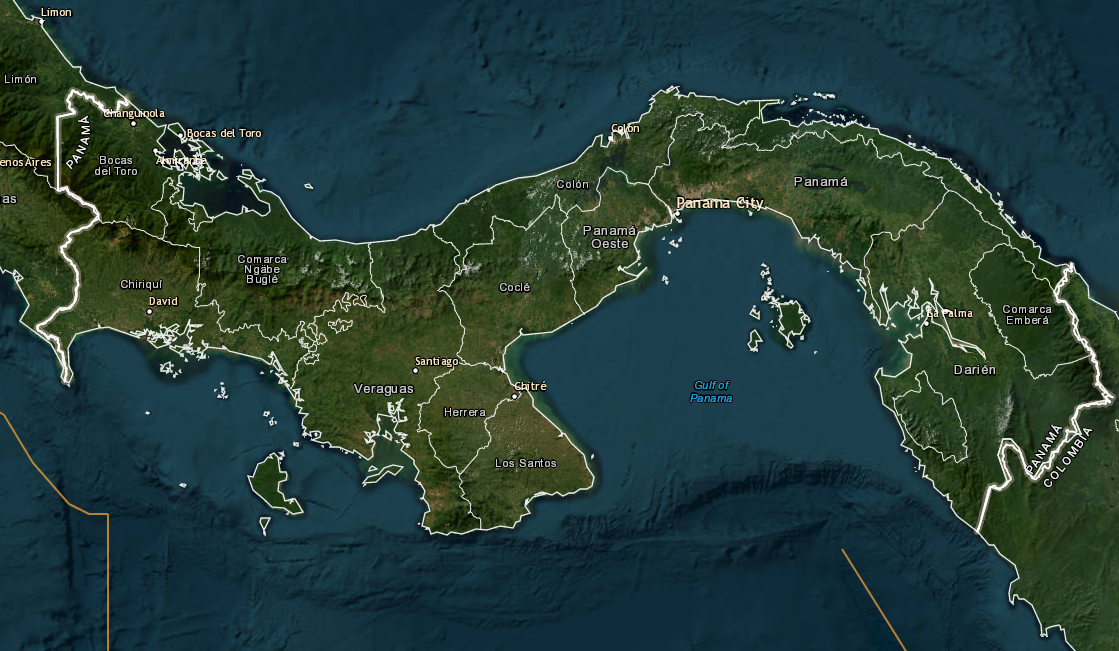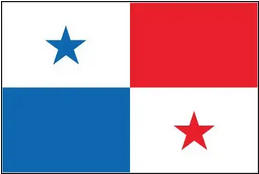
Facts and information about Panama
Panama is located in Central America and borders Costa Rica to the west and Colombia to the east. Panama has 2490 kilometers of coastline, and the highest mountain is Volcan Baru, 3475 meters above sea level. Panama has 42 national parks and nature reserves. There are rainforests, cloud forests, wetlands, mountains, rivers, water, waterfalls, deserts, and coastal landscapes.
There are approximately 4.47 million people living in Panama, and the majority live in the capital, Panama City, which is located on the Pacific side at the entrance to the Panama Canal. Panama has 10 provinces: Darien, Colon, Panama, Panama Oeste, Cocle, Veraguas, Chiriqui, Herrera, Los Santos, and Bocas del Toro. In addition, there are 4 "comarcas" which are autonomous areas for the indigenous population: Guna Yala, Ngobe-Bugle, Naso Tjer Di, and Embera-Wounaan.
The Panama Canal
The Panama Canal is 80 kilometers long and was built from 1904 to 1914 by the Americans. The French tried to complete the canal earlier, but had to give up. More than 20,000 workers died during the construction of the canal. Every year, more than 14,000 ships pass through the canal, which is a waterway between the Pacific Ocean and the Caribbean Sea. The ACP, Autoridad del Canal de Panama, which operates the canal system, employs about 9,000 people. The Panama Canal is the largest source of income for the Panamanian state.
Other economic activities:
Agriculture, sugar cane, bananas, rice, oranges, coffee, cattle and dairy farming, plantains, pineapples, corn, chicken, cigars. Industry: Tourism, construction, breweries, cement and construction materials, sugar refining.
Export products:
Copper, fish, bananas, refined petroleum products.
Governance
A new President is elected every 5 years in Panama. Panama is a republic, and the official name is Republica de Panama.
Language
Spanish is the main language in Panama, with English as the second language. Please note that in the countryside, fewer people speak English. In addition, the indigenous people have their own languages.
Climate
The climate is warm and pleasant all year round. What varies is the rainfall. The rainy season is from April to November. It is not that it rains all the time during the rainy season, but there is mostly a small shower every day. Sometimes several weeks can also pass between showers during the rainy season. The dry season, or summer, is from December to April.
Geology and nature
Panama emerged from the sea due to volcanic activity about 3 million years ago, and the country forms a land bridge between North and South America. This means that it has an extremely rich flora and fauna. For example, there are 1012 different species of birds, 255 different mammals, 1200 species of fish, many beautiful butterflies, and an incredibly rich plant life with 10,000 different species. Many bird species from North America winter in Panama.
In Panama there are rainforests, cloud forests, mangrove forests, wetlands, mountains, deserts, coastlines, rivers, waterfalls and water. All this contributes to a great biodiversity.
Currency
The official currency in Panama is the Balboa, but in practice the US dollar is used as a means of payment. If you come to Panama, you can withdraw dollars at ATMs (automatic teller machines) in all cities and most villages in Panama. (Panama has a well-developed banking system).
Recommended things to bring
Here is a small list of things you can bring with you if you come to the shaman school, on a recreational stay, or on a nature trip:
A small but strong flashlight.
Personal medicine + common travel medicine such as immodium, paracetamol.
Passport
Copy of passport
Airline ticket printout
Money in US dollars. (You can also withdraw money at ATMs in the cities)
Sunscreen/sunglasses
Toiletries
Plug-outlet adapter (USA type)
Clothes
Sun hat/cap
Light short-sleeved shirts/T-shirts
Long-sleeved shirt and hiking pants of the Colombia or Mountain Hardwear type, which dry quickly.
Thin fleece jacket (for trips to the highlands)
Light rain jacket
Jungle boots/light hiking boots with good ankle support. Rubber boots can replace hiking boots.
Light shoes/sandals for the hotel/lodge, as well as the boat trips. Socks to wear in the boots.
Photo equipment
Here is a list of recommended photo equipment for those who want to join the nature trip in Panama, but also for those who want to take pictures whether you are on a recreational stay or the shaman school. (You can also join all these trips without taking pictures, but just enjoy the nature.)
Camera body or an extra body
Wide-angle zoom (for example 10-20mm, 16-35mm, 24-70mm, 24-105mm)
Macro lens
Telephoto lens for photographing animals and birds with possible teleconverter
Cable release Flash/ macro flash
Flash beamer
Carbon tripod with ball head
Graduateded neutral density filters from Singh-Ray + filter holder Cokin-P and adapter ring
Polarizing filter
Enough memory cards
Extra batteries for the camera
Battery charger
Rain cover for the camera
Laptop with your preferred image processing program
Memory card reader
Batteries for the flash
Photo bag with built-in rain cover
Silica gel in the photo bag (to absorb moisture)
Recommended books:
"Rough Guide to Panama", by Sara Humphreys.
”The Birds of Panama” by George R. Angehr og Robert Dean.
”The amphibians and reptiles of Costa Rica”, by Jay M. Savage.
